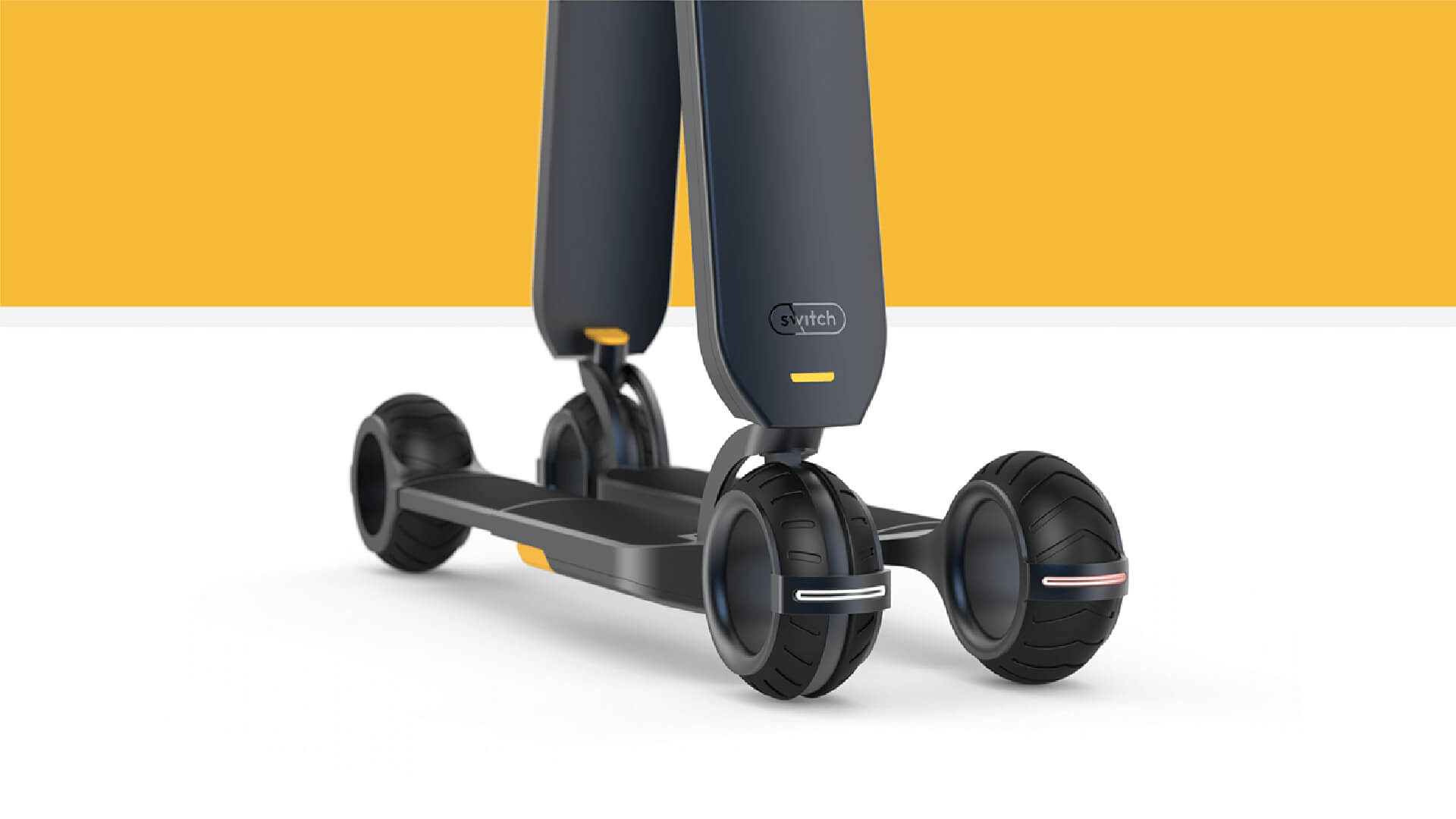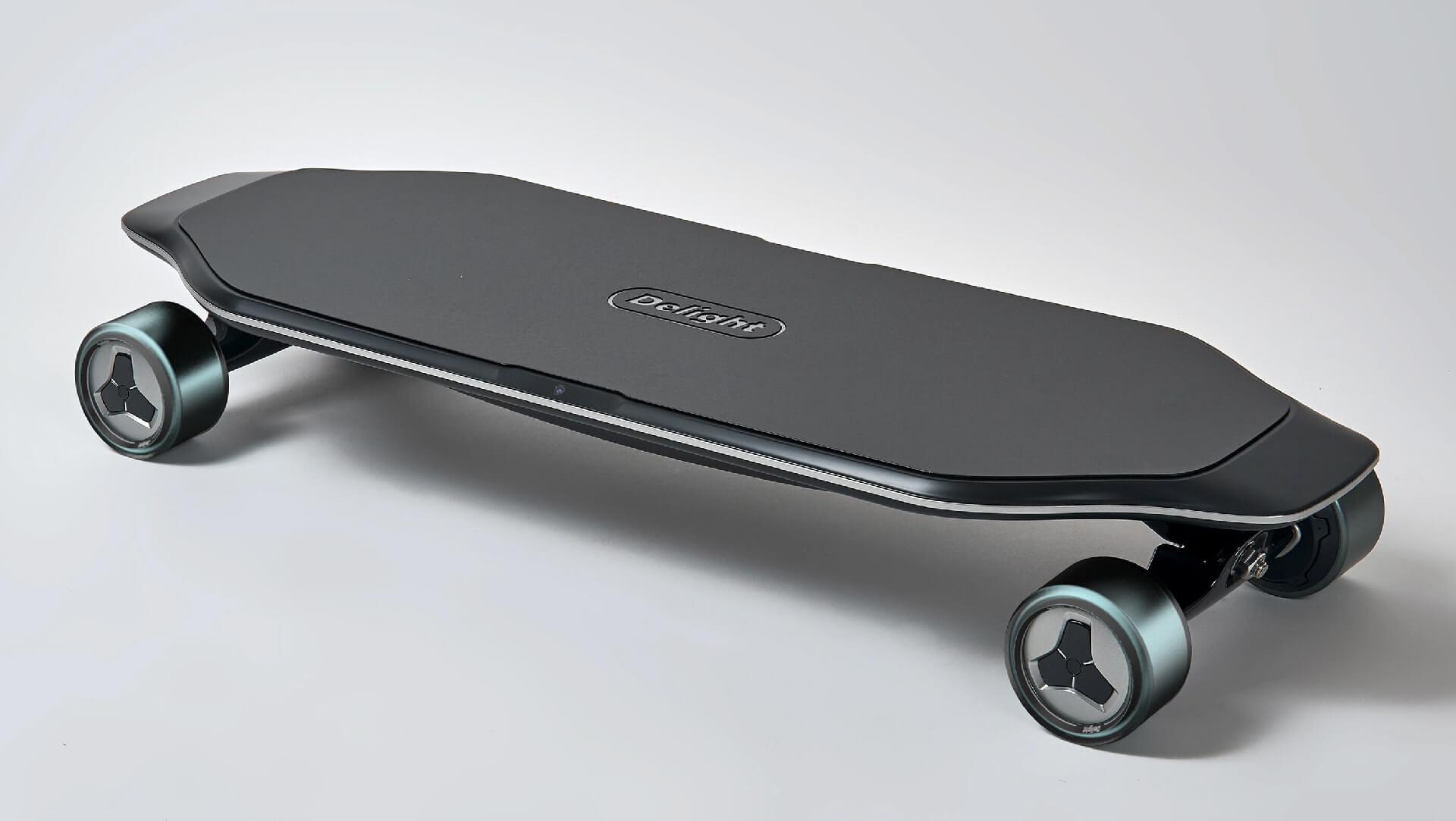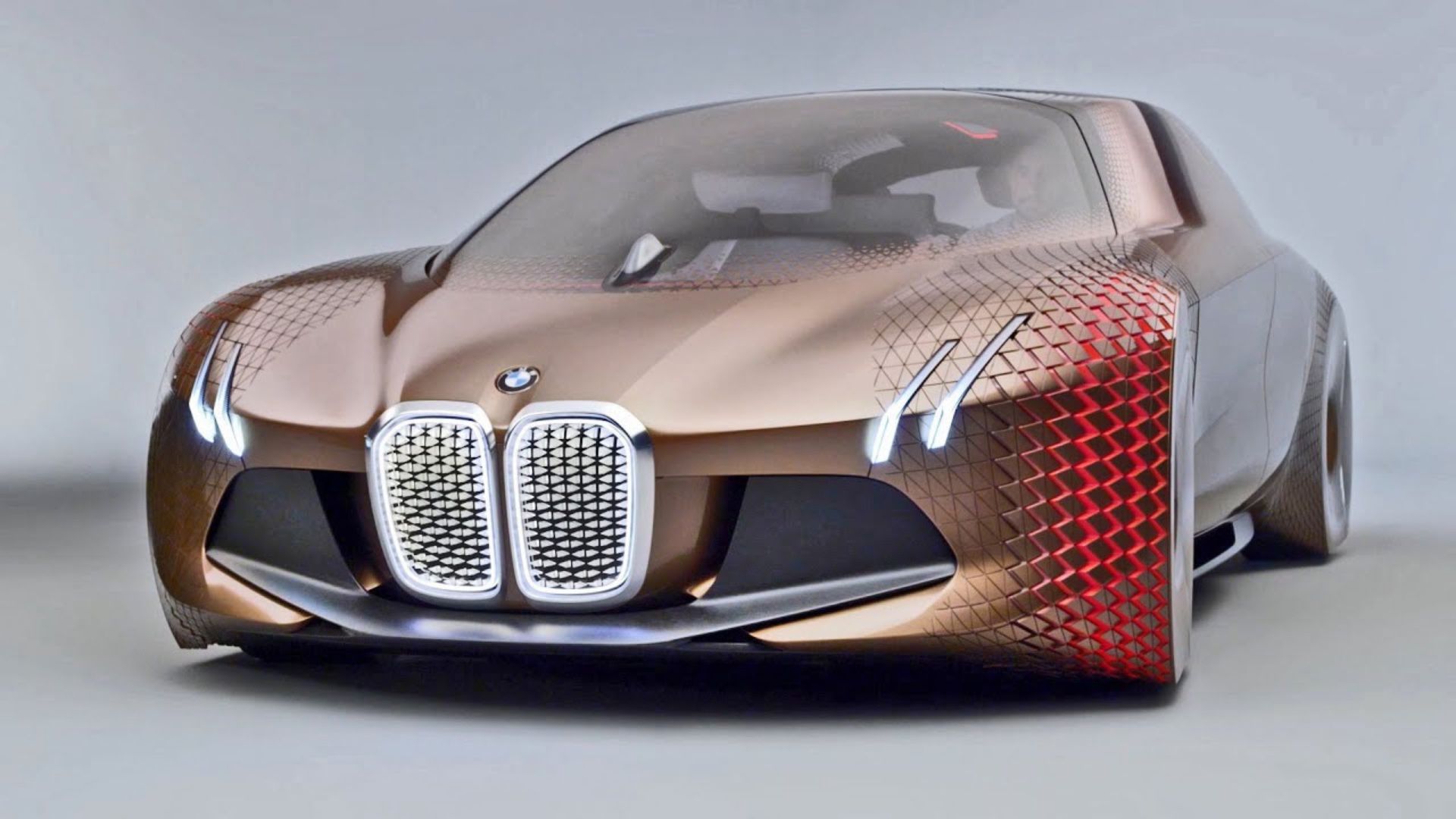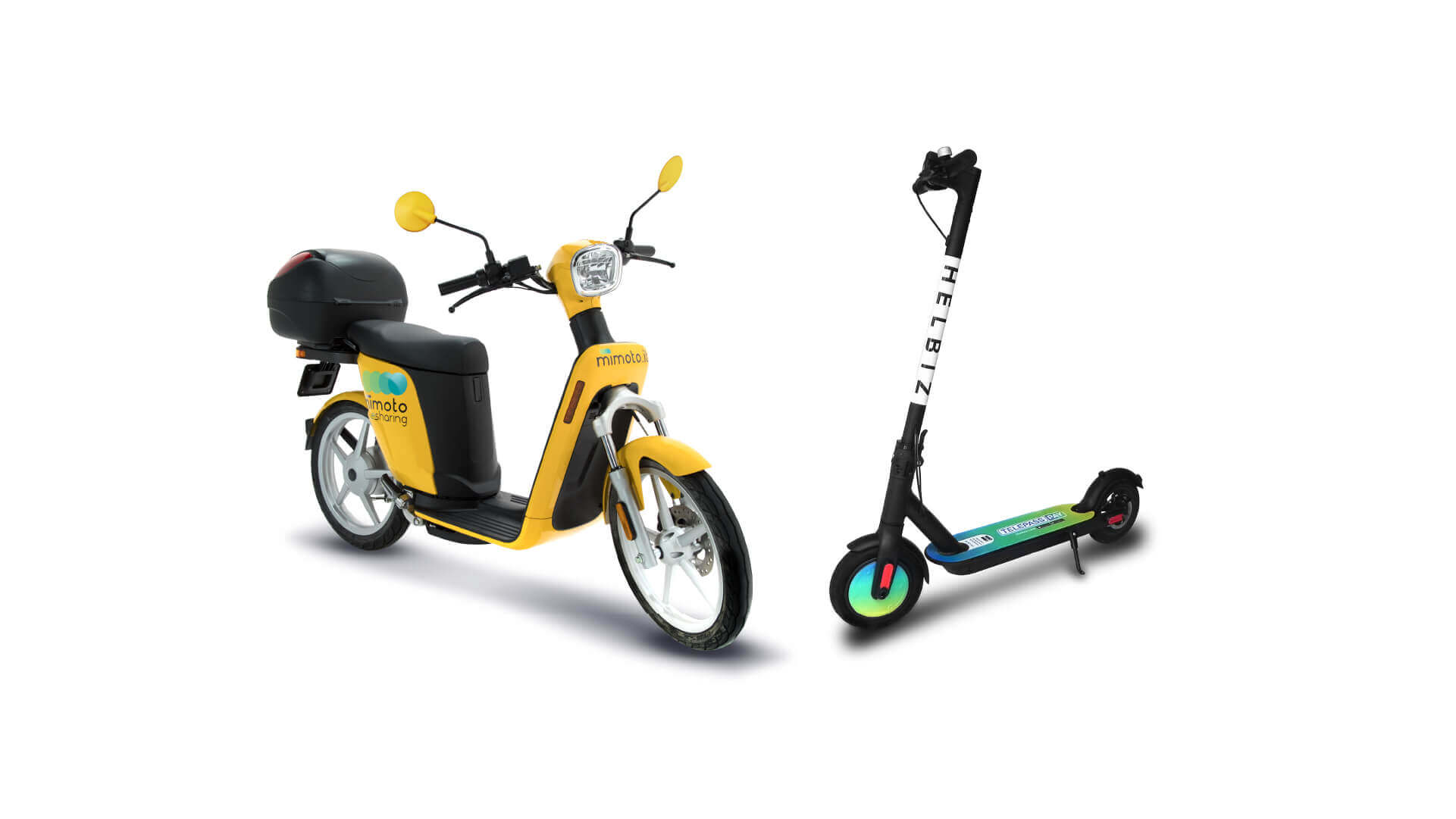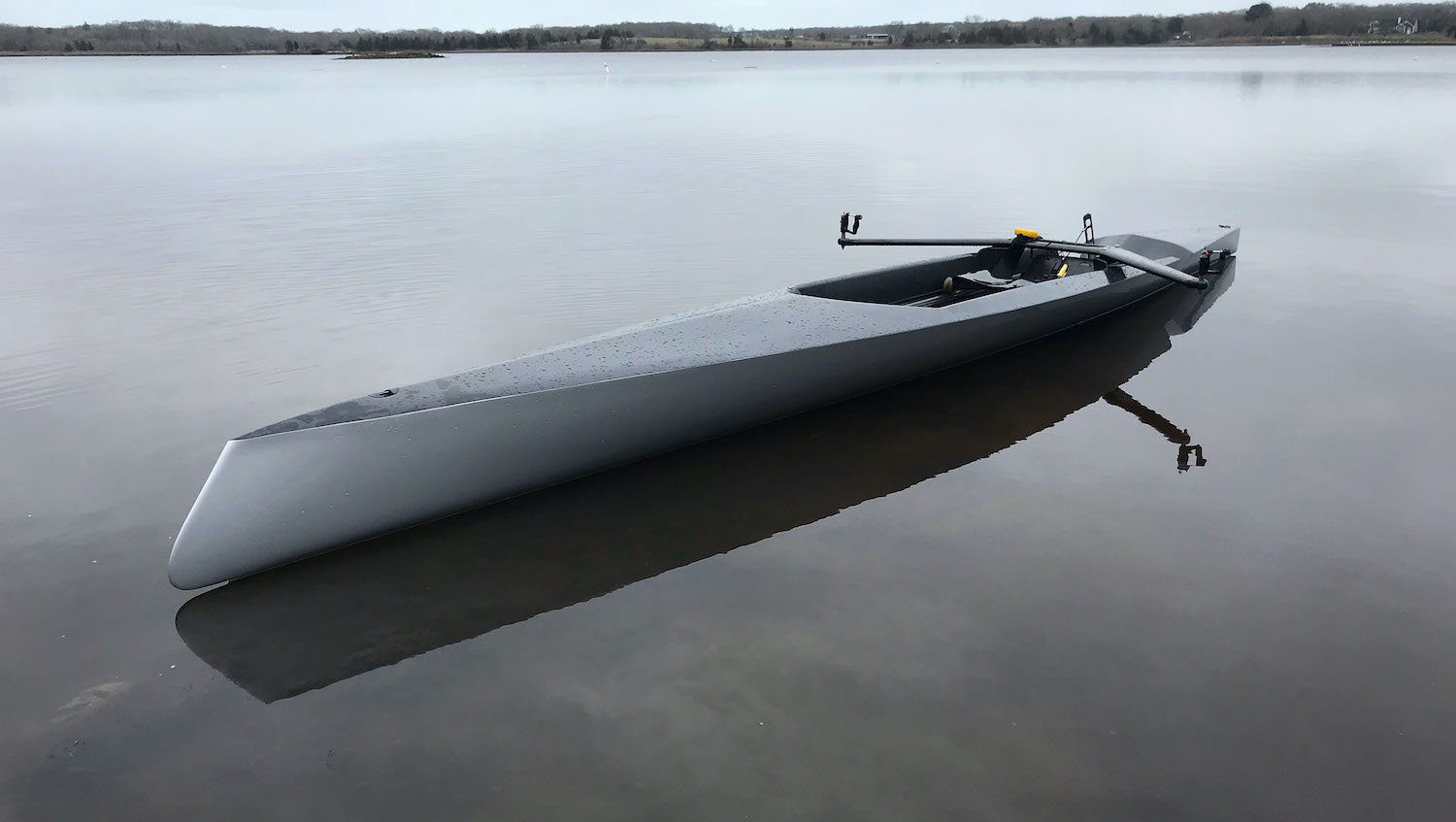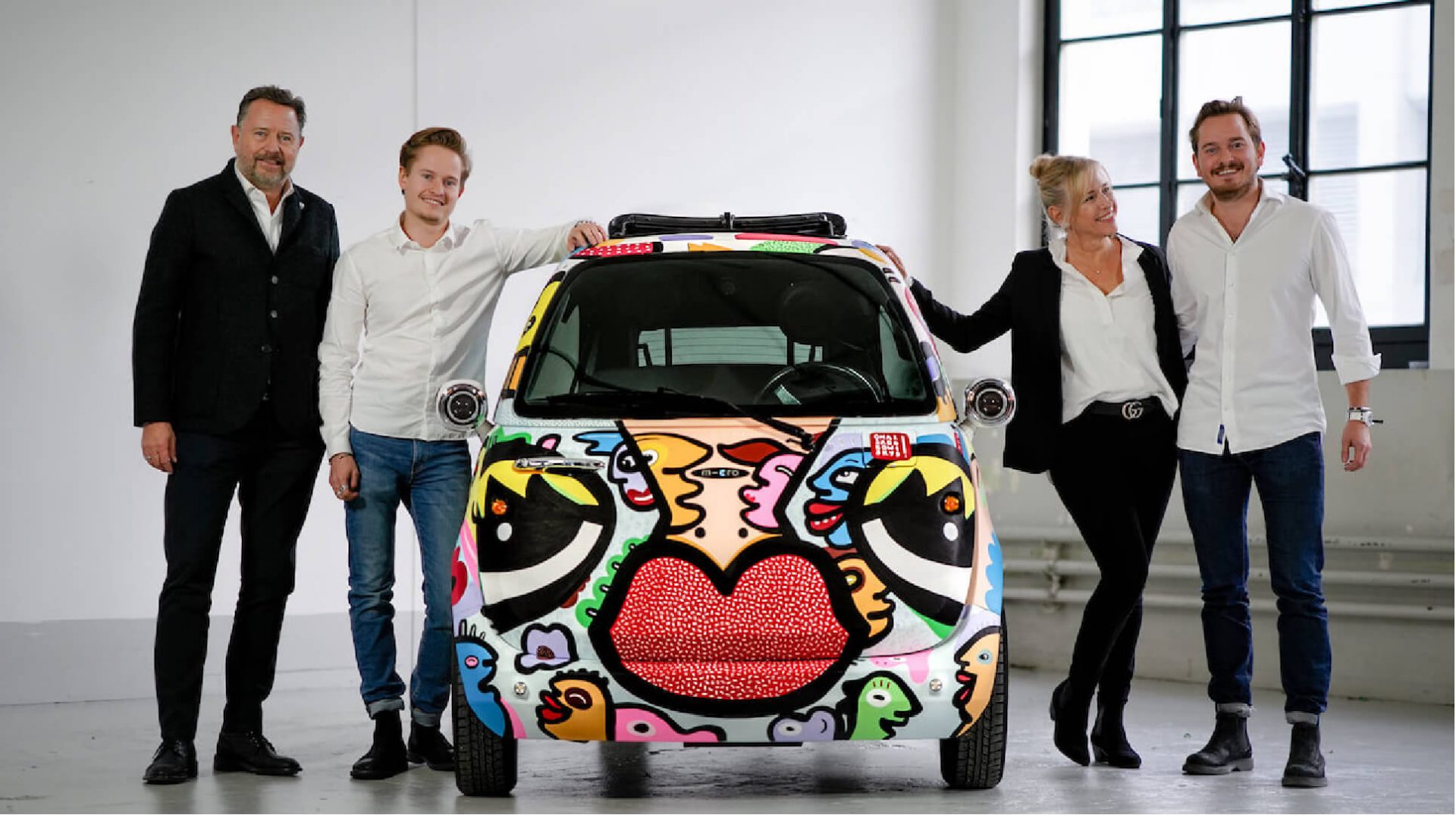“We’re interested in the future of reality, not in a fantasy of the future”
Interview with Lowie Vermeersch, CEO & Creative Director of Granstudio, an innovative car design and mobility research consultancy working globally across the entire mobility ecosystem.

With years of experience in the automotive field, Lowie Vermeersch leads Granstudio, a multidisciplinary firm that deep dives into the future of mobility and creates projects that embrace a broader context and the people at the center of it.
Design is a critical form of human interaction, it is all around us and it shapes how we interact with objects, our experiences, and environments every day. When it comes to mobility, design is essential. This powerful field not only has the capability of reshaping how we move but also how we behave, therefore, a well-rounded approach to it is crucial and necessary.
Lucky for us, designers like Lowie Vermeersch and his team of experts at Granstudio take a multidisciplinary and holistic approach to the mobility field, look beyond the known conventions and create meaningful mobility for people and society.
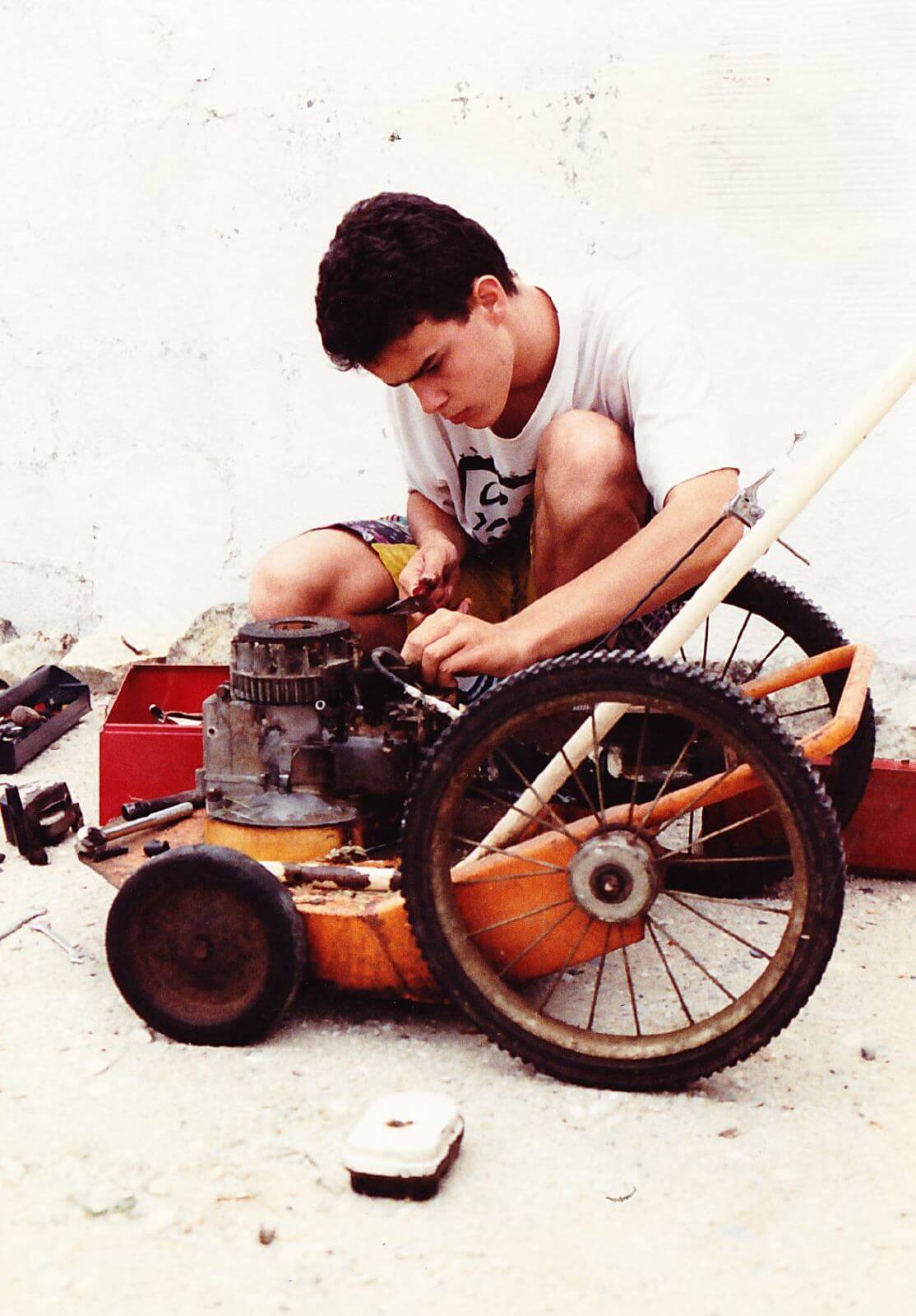
Founded in 2011 by CEO & Creative Director Lowie Vermeersch, Granstudio is an innovative car design and mobility research consultancy working globally across the entire mobility ecosystem. Their unique combination of expertise, vision and a holistic approach not only allows them to design future mobility but also understand its changing role and perceive new possibilities and innovation in the field.
DesignWanted had the opportunity to interview powerhouse designer Lowie Vermeersch and learned more about car design, future mobility, understanding people’s behavior, and how Granstudio develops beautiful and feasible products that people are attracted to and love to use.
Who is Lowie Vermeersch? How did the journey from car design into the broader field of mobility begin?
Lowie Vermeersch:
“I grew up in a family of artists in the Belgian countryside, where after dinner Instead of watching TV we sat around the table with my 3 brothers – all of them successful artists today – with a big pot full of pencils and pens in the middle of the table to make drawings.
But I also had a fascination for machines, and how things work, and especially I was fascinated with everything that could move. I made and repaired all kinds of vehicles and I even tried to build a full-scale car in wood when I was 12 only to abandon the project when I could not figure out how to attach wheels.
So when I accidentally heard as a teenager that there is a profession called ‘designer’, in which you actually both define how things look like and how they work, uniting the art and the machine, It really created that dream in my mind to once be able to design vehicles. That dream brought me to the University of Delft in Holland where I studied Industrial Design (car design schools were still quite exclusive then), and from there to Pininfarina in Italy.”

Why Granstudio? What moved you to focus on the changing role of mobility and seek new possibilities?
Lowie Vermeersch:
“When people look at my career there is often focus on the fact that I was responsible for the design of several Ferrari’s, but in reality, it has always been a broader Interest that fuelled my choices. My study was not just specific to cars, and also my professional choices in essence try to stay faithful to that youthful amazement for all things that move.
After I had a wonderful time in Pininfarina designing many cars, including becoming their Design Director in 2007, and had learned all the ins and outs of what a car is, I really felt the need to ‘get back’ to that broader passion. Essential hereby was that during my study at the University in Delft I met Matthijs Van Dijk, currently their professor of Mobility. Because he reframed my focus, making me understand that those things that I had so far considered as being the ‘end goal’ – the styling, the function, the object – are in essence just the means to get to the real goal. And that goal is creating meaning for people and for society.
My practise Granstudio is a combination and expression of all that, a creative space and a multidisciplinary team that is looking at the bigger picture of ‘moving people’. A place that has a deep know how of vehicle design, but we use it as a means in our ambition to create meaningful mobility for people and society.”

The unique combination of vision and expertise allows Granstudio to overlap visual design, service design, and urbanism. What does this mean in the context of generating solutions for future mobility?
Lowie Vermeersch:
“Working in that overlap between different disciplines is the only way in which I think we can design mobility. All aspects need to be present, in a balanced way. Solutions that are born in one specific discipline often tend to extrapolate the knowledge and beliefs that are Imbedded within It. Car designers will try to resolve mobility challenges with better cars, UX designers will often take an app as their starting point. But only by working in the center of that overlap, unbiased, we can see the true potential of what is possible. A potential that lies exactly in the combination of things.
That’s why I think that we need to create education, practices and media channels that truly embrace that multidisciplinary approach. Not just adding the word ‘mobility‘ because it’s trendy now, but create a new discipline that puts at its center people, society and embraces know how of other disciplines as a means to an end but not as a starting point.”

The combination of your expertise is well represented by your project Mobjects. Could you explain how this concept could change mobility for pedestrian public spaces?
Lowie Vermeersch:
“I think the Mobjects in fact are a good example of that multidisciplinary and holistic approach. It’s an autonomous electric vehicle, but evenly a digital public canvas and connected mobility service, and It’s also smart street furniture that creates a meeting point or shelter.
It was born out of the ambition to improve mobility for people when distances become too far to walk, but too short to use other existing vehicles. Think about large pedestrian areas or bridging odd gaps in our multi-modal mobility journeys. But we also wanted to create something that had a positive impact on our public space, contrary to parked cars that suck away space and energy. It’s that people and society driven approach that led us to understand what It had to be, something very different than what we currently know, and only later we used our expertise to engineer it into reality.
Mobjects have the potential to expand the quality of our pedestrian public spaces, not just to fill in small gaps during our daily journeys. They can create a positive interaction between people, vehicles and our urban space, both when driving or standing still. You can hop on or hop off at any moment, or use them to meet some friends. It’s a new kind of ‘diffused’ mobility that blends Into our cities and into the unpredictable and highly fluid daily behavior of the people that populate them.”
The continuous research from Granstudio allows seeing new perspectives and opportunities in mobility. What are your thoughts on the most discussed trends in the sector such as electric vehicles, mobility sharing, and connected vehicles?
Lowie Vermeersch:
“We could add ‘Autonomous Driving’ to this list to complete the list of CASE trends: Connected, Autonomous, Shared and Electric. It’s telling by the way that we use the word trend for what are mostly new technologies. Right now we see the first phase of exploring these opportunities in which most of the time existing vehicles or services are expanded with those new technologies. Existing vehicles become electric, cars become connected and autonomous, and we make existing vehicles designed for ownership available through sharing programs.
But my true interest is in going beyond this ‘extrapolation phase’. We need to use these opportunities not only to enhance what we know now, but use them as a kind of permission to thoroughly reframe what mobility means should be, knowing that these technologies will allow us to realize things beyond the limits of our current mindsets.
What I see then is a future of mobility in which the change in human behaviour is the true and fundamental ‘trend’, stimulated and enabled by new technologies, in which we move in a more conscious and sustainable way, sometimes deciding not to move at all. A future in which we’ll mostly just use our vehicles instead of owning them, allowing us to choose different modes of transport for different purposes and places. This will lead to a much bigger diversity of mobility means, each of them more purposeful within a specific context and a specific task. Like the Mobjects in a city centre or an high frequency autonomous high speed train for long distances.
In the future more diverse vehicles will create each time a balance between user desires and context needs.”
Sustainability is a current issue in the mobility sector, what is the approach from Granstudio projects towards this challenge?
Lowie Vermeersch:
“We have no leverage over the sustainability of energy in itself, so our contribution is focussing on energy efficiency, not only when using a vehicle but also to produce a vehicle. On the long term it’s not enough to substitute combustion engines with electric drivetrains, but we need to reduce the quantity of resources that we use to move ourselves and our goods.

Within Granstudio we do this in 2 ways. When we’re asked to work on a specific vehicle we focus on designing those vehicles as efficient as possible. We have a lot of know how in this that comes from our expertise in true sports car design, where efficiency prevails over marketing. The design we made for the Lightyear One is a good example of this, of which the key challenge was to develop an attractive car that seats a family of 5 and has an ultra-high energy. We created an extremely aerodynamic silhouette so that the car needs less energy to move through the air. in combination with the 5 square meters of solar cells on the roof, lightweight structure and narrow wheels It makes for an very efficient and sustainable design.
But the true gain can be found in my opinion in making vehicles more fit for purpose. The car is now a kind of Swiss knive on wheels, averaging the needs of many different purposes and situations. But while an advanced and efficient car will still remain the best mobility option in the future for many situations, we can create a much more sustainable mobility if we ‘trim down’ vehicles to fit a specific use, reducing their footprint in the broad sense of the word, often Improving the pleasure of using them in the process.”
Designers always encounter the ongoing ‘chicken and the egg’ dilemma about human behavior and how it should be approached. Should new approaches towards mobility focus on people’s behavior adapting to new designs? Or should new designs adapt to people’s behavior?
Lowie Vermeersch:
“It’s about finding a good and dynamic balance between those 2 approaches. Continuous and incremental influences between people’s behavior and new designs seem to me the only path forward. That’s why I’m not attracted by future mobility scenarios that show idealistic end states without taking into account reality or simply extrapolate the latest technology trends to a totalitarian extreme. Too many times they feel detached from what society actually is, with all its human shortcomings and a beauty embedded in diversity.
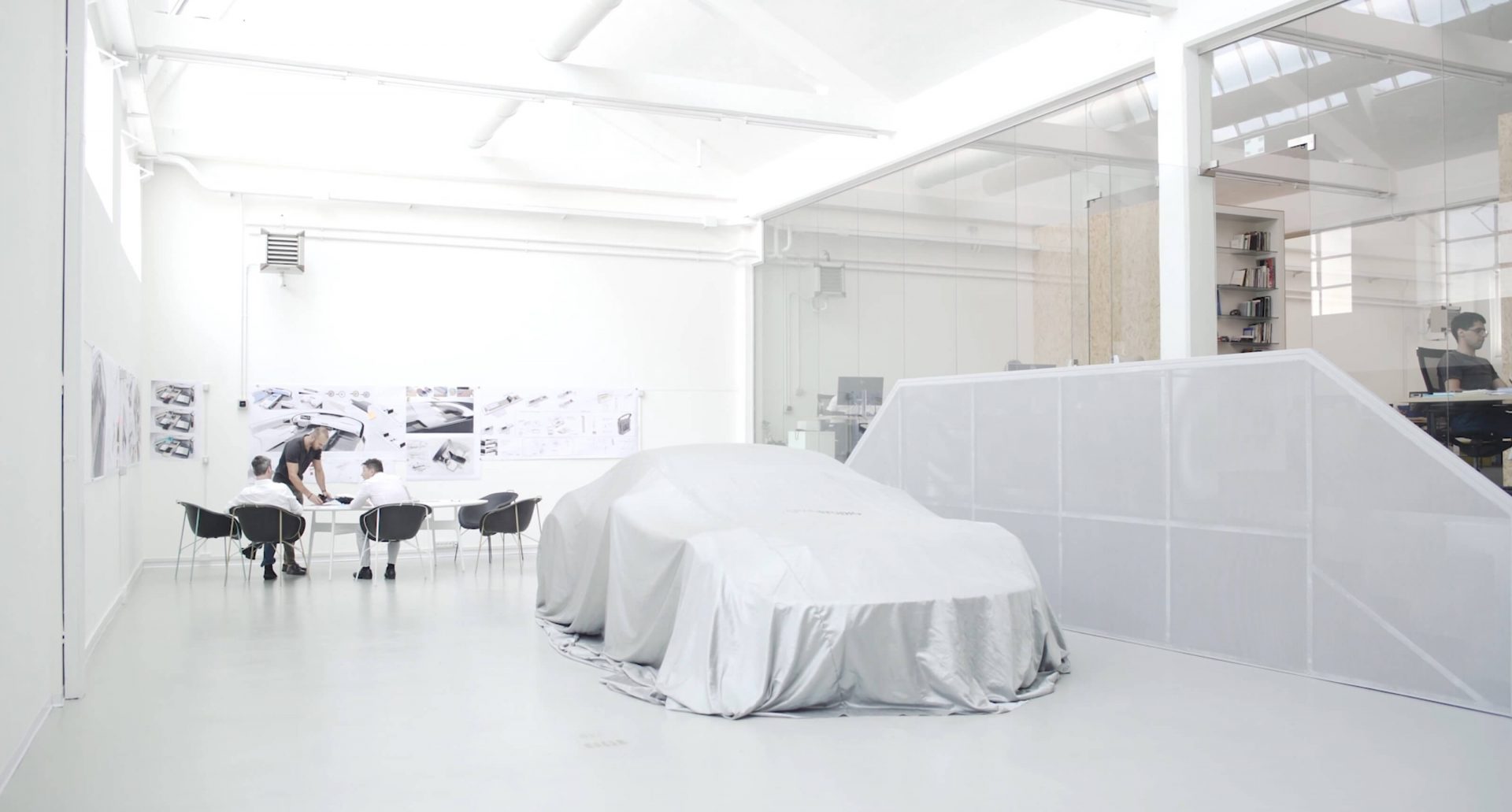
So I do work out of a vision of a desirable future that is defined beyond what is possible today. It’s essential as a guidance to me. But I happily embrace the compromise of reality when translating that vision into visuals, ideas or designs. Because i’m Interested in actual change, no matter how small it is. I’m interested in contributing a piece for that messy but also democratic process of evolving reality towards something better. in the studio we tend to say that we’re interested in the future of reality, not in a fantasy of the future.”
Working on a global range of projects and continuously innovating, what is the next step for Granstudio?
Lowie Vermeersch:
“I feel we are still very much at the beginning or realizing the ambitions I talked about. Since we formed the studio in 2011 a lot of focus has gone into creating a team capable of fully developing mobility means and creating a space for research that can exists within the sometimes harsh economic reality. Part of that is doing many consultancy jobs that also help to deepen our expertise and sharpen our vision.
Now I feel we’re ready to engage more with the outside world and translate our ideas and vision more and more into reality. A first example of this is Komma, a new Swiss mobility start-up that we partner with and that will allow us to develop and commercialize some of our new mobility ideas.

The first Komma Vehicle, a comfortable and agile 2 seater EV, will be launched on the market in 2022. I like to see it as a first concrete contribution to improve reality. A very efficient and new type of vehicle that generates positive meaning for people, and in doing so helps to change behaviors in the right direction.”











